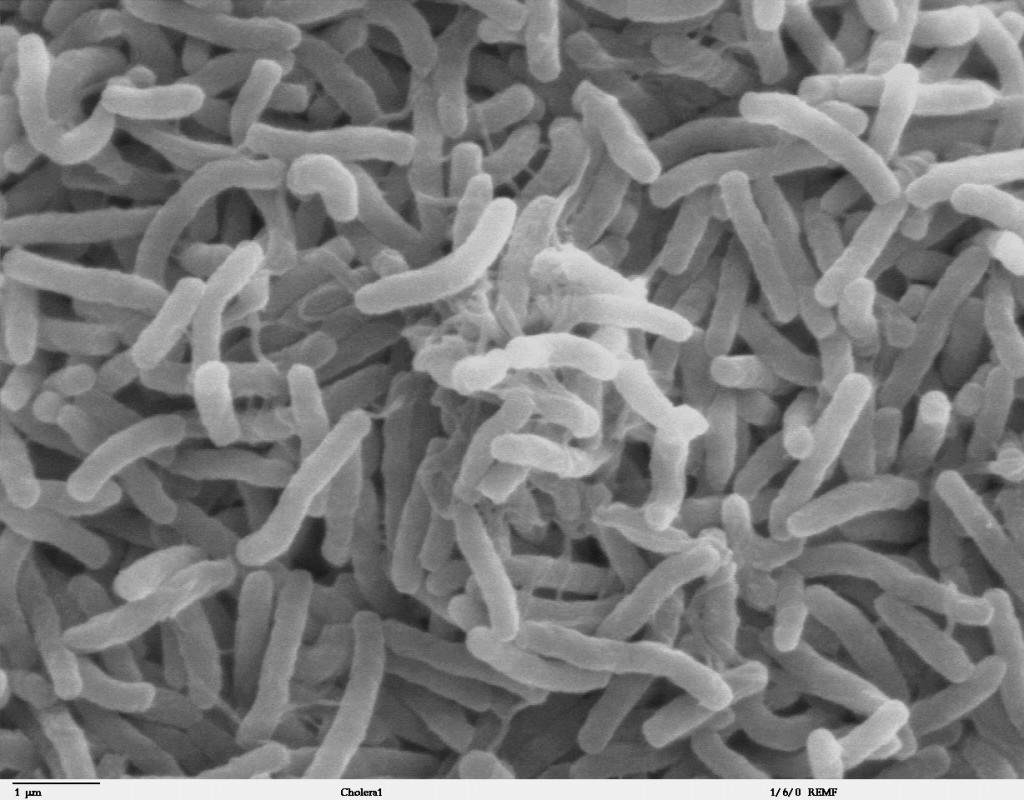4 December 2012
Hydrofracturing brings out the tough bugs
Posted by kramsayer

Microbes emerge from a hydraulic fracturing well tougher and less diverse than the ones that went in. (Credit: Ronald Taylor, Tom Kirn, and Louisa Howard, Wikimedia Commons)
Opponents of hydraulic fracturing, or “fracking,” often voice concerns about chemicals leaking into the groundwater supply and making people sick. But what about the microbes that call fracturing fluid their home?
In the fracking process, fluids are forced deep into the Earth at high pressure to break up tightly packed sediments and liberate natural gas stores for extraction. While fracturing fluid does contain chemicals, more than 85 percent of the fluid is derived from surface or ground water, which contains its own compliment of microbial inhabitants.
Imagine it: One minute, diverse communities of microbes co-exist in their watery homes. The next, they’re sucked up, mixed with chemicals, and forced 5,000 feet down into a nearby well to break the ground apart.
This disruption not only kills microbes unfit for the drastic changes in chemistry, pressure, and temperature, but also promotes the growth of other microbes more suited to harsh environments, explained Paula Mouser, a professor of civil and environmental engineering from Ohio State University. Mouser presented the new findings in a poster on Monday morning at the American Geophysical Union’s Fall meeting.
When fracturing fluid is forced down into the sediment, about 20 percent of it bubbles back up to the surface. This “flow-back” contains the fracturing fluid itself, along with any sediment it may have disrupted. Mouser’s team sampled flow-back from three 5,000-ft deep wells in the Marcellus shale—a natural-gas-rich layer of sediment in the Appalachian Basin— and used genetic sequencing to compare the types of microbes in the input fracturing fluid to those in the flow-back over time.
The results of the genetic analysis revealed a striking loss in microbial diversity in response to fracking.
“Over a couple of days, we see this really big shift to organisms closely related to salt-tolerant organisms, organisms that we see in the deep sea, and hydrothermal vents,” said Mouser. One genus normally found in decaying marine organisms—Halolactibacillus—made up 73 percent of the flow-back fluid.
“We don’t know if these organisms come from this formation or if they started in the fluids that we sent down,” explained Mouser. At present, the types of microbes that normally live deep down in the Marcellus shale are unknown. Her team plans to analyze the types of microbial communities that exist in the shale prior to fracking to get a benchmark measure of diversity.
In her current study, she found that four of the six bacterial genera that dominated the flow-back fluid are related to disease-causing microorganisms. But since the type of sequencing conducted in the study did not differentiate between species within each genus, there is no evidence that fracking breeds dangerous bugs. Disease-causing bacteria tend to be hardy by nature (they are tough enough to persist in the water supply), so it makes sense that these genera would be highly represented after a stressful event like fracking, she said.
More research is needed to determine what effects these tough microbes could have on surrounding ecosystems, and how the process of microbial selection occurs in response to fracking.
One thing is certainly clear when it comes to fracturing fluid though — what goes down is not the same as what comes up.
-Jessica Shugart is a science communication graduate student at the University of California, Santa Cruz










 GeoSpace is a blog on Earth and space science, managed by AGU’s Public Information staff. The blog features posts by AGU writers and guest contributors on all sorts of relevant science topics, but with a focus on new research and geo and space sciences-related stories that are currently in the news.
GeoSpace is a blog on Earth and space science, managed by AGU’s Public Information staff. The blog features posts by AGU writers and guest contributors on all sorts of relevant science topics, but with a focus on new research and geo and space sciences-related stories that are currently in the news.